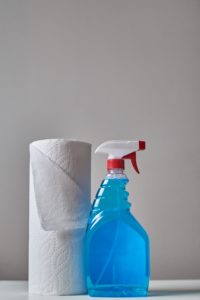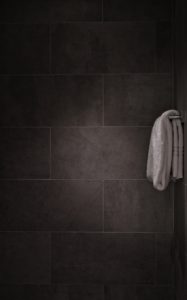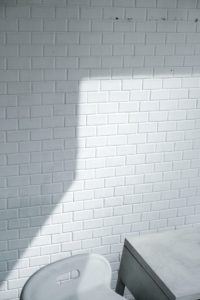Easy Steps to Clean a Bathroom
Disclosure: In our articles, we independently choose products and services to feature that we think you'll find useful. This post contains affiliate links. If you make a purchase after clicking one of our links, we may earn a small commission.Is your bathroom dirty? Does it have mold, calcification, mildew, or other problems? Here are various ways to clean your bathroom, and get rid of the many harmful invaders of your bathroom!
Routine Bathroom Cleaning
You should probably clean your bathroom once a week. This routine bathroom cleaning should clean the following items: Your shower, your sink, your toilet, your tub, your floors, your mirrors, your counters, your cabinets, door handles, and any shower walls or windows.
Cleaning Sinks and Toilet Exteriors
Sink interiors and toilet exteriors should be rubbed down with something that can kill large amounts of bacteria, but should be relatively non-toxic. Clorox wipes work well for killing off bacteria, and the smell dissipates relatively quickly for a cleaner. Be sure to turn on the fan in your bathroom while you are cleaning. Read the warning for which chemicals it should not be mixed with.

If the faucet head of the sink and the flush knob of the toilet are metal, you may consider using a specific metal cleaning solution specific to the metal you are cleaning. Brasso Metal Polish or Noxon work on chrome, stainless steel, brass, copper, aluminum, pewter, and bronze. If you have a different metal (zinc coated, oil-rubbed bronze, nickel, etc.), consider buying a more expensive, but all inclusive item, such as Midas Touch Metal Polishing Cream, which works on additional metals such as zinc, nickel, platinum, silver, gold, etc.
If you have a metal sink (such as aluminum or stainless steel) interior, consider using the afore mentioned metal cleaners or some other cleaner. For scratches, using either the rough part of sponges, or scrubbing with steel wool will work well.
Warning: Many chemicals in bathroom cleaners are toxic either by themselves, or when mixed with other chemicals. Do not go around mixing cleaners, or using two right in a row, unless the cleaners explicitly are meant to work together. Always use the utmost caution. As with all dangerous chemicals, all of these should be kept in a nice, room temperature environment, out of the reach of children and pets, and safe from flames or rapid heat changes.
Cleaning Showers and Bathtubs
You can scrub down showers and bathtubs with Clorox wipes as well, but many cleaning experts recommend spraying cleaning solution on your shower walls, and letting your bathtub soak with a cleaning solution.

For the drains, the shower head, and the tub faucet, consider using the mentioned metal cleaners.
Cleaning Toilet Interior
Toilet cleaners work well for toilet interiors, as you want to get rid of any microbes growing inside of your toilet, any red mold, and any black mold. These chemicals are very strong, and will absorb through your skin, so wear gloves and be careful. Use a scrub brush to help scrub any gunk out of the toilet.
Cleaning Mirrors and Glass
When cleaning mirrors and glass, you should use a glass cleaner (such as Windex), a squeegee, and a wiping cloth, to fully clean it. Make sure your wiping cloth is made out of a type of fabric that won’t leave bits of thread and fabric behind, as many typical cloths and fabrics will do exactly that.
Cleaning Floors
You can mop your floors, sweep them, wipe them with Clorox wipes, or do some combination thereof.
Cleaning Mold and Mildew
Black molds, red molds, white molds, green molds, or molds of all colors, are not what you want in your bathroom. Some molds can be killed by letting vinegar sit on it for an extended period of time, others require a more serious mold killer to be used. Ammonia, borax, hydrogen peroxide, and bleach, are just a few of the many dangerous and harsh chemicals that can be used to kill mold.
Mildew is less dangerous, but is still not healthy for you (and smells really bad). Mildew can be invisible, or can show up as green or yellow if it grows in large enough amounts. It smells at first, but as you are continually exposed to it, you will notice the smell less, but your guests will notice it.
I recommend getting official mold cleaning products. When it comes to something as resilient and dangerous as mold, you need something that will remove it the first time. Lemocide Disinfectant claims to kill 100% of mold, mildew, and viruses. It is a professional grade product that is used in hospitals and food processing facilities, to name a few places.

Most molds will then leave behind a stain. You can use a mold and mildew stain remover to get rid of the stains, at least partially.
If you have white grout, it will slowly turn black over time as it is exposed to dirt. At first it isn’t evident, but as time goes on the differences in color between the white grout and the dirty grout will show. If you have dirty grout, you have two options. You can flat-out clean it, with a grout cleaner such as IT Just Works or Zep. You could also use a resealant that reseals and cleans at the same time, but it would only work around the edges where you want it sealed.
If you liked this article, be sure to subscribe to the posts on planandorganize.com, and to check out some of our other articles.
Kyle is a staff writer at Plan and Organize™ as well as our marketing coordinator. An undergraduate student at the University of Florida, Kyle enjoys writing about business, education, DIY, history, astronomy, and other science topics. In his free time, Kyle enjoys chess, astronomy, bird-watching and sci-fi.






 RSS - Posts
RSS - Posts